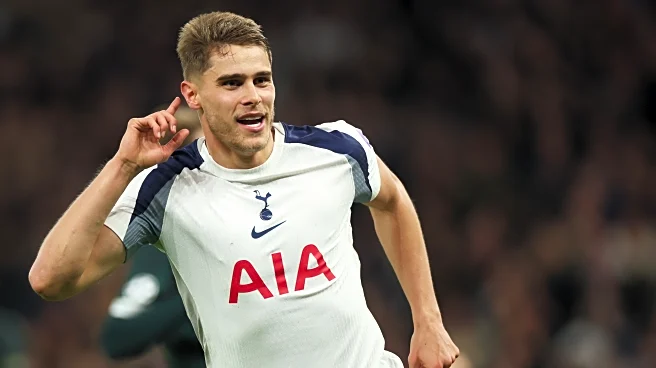What's Happening?
Freestyle skier Flora Tabanelli has been diagnosed with a torn anterior cruciate ligament (ACL) in her right knee, just months before the Milan-Cortina Olympics. The injury occurred during a training session,
sidelining the 17-year-old athlete who previously won gold in big air at last season's world championships and was the World Cup champion in the discipline. Tabanelli will undergo a month of rehabilitation at the Juventus soccer club's J/Medical facility to determine if surgery can be avoided. Her injury adds to the list of Italian athletes facing setbacks, including Alpine skiers Federica Brignone and Marta Bassino, who are also recovering from injuries.
Why It's Important?
Tabanelli's injury is a significant blow to Italy's Olympic hopes, as she was a top contender in freestyle skiing events. Her absence could impact Italy's medal prospects at the Milan-Cortina Olympics, highlighting the challenges athletes face in maintaining peak performance amid injuries. The situation underscores the physical demands of competitive skiing and the importance of injury prevention and management. For Tabanelli, the injury could affect her career trajectory, as she navigates recovery and potential surgery at a young age.
What's Next?
Tabanelli will begin her rehabilitation program on Monday, with the goal of avoiding surgery and returning to competition. The Italian Winter Sports federation will monitor her progress closely, as her participation in the Olympics remains uncertain. Meanwhile, Federica Brignone and Marta Bassino continue their recovery efforts, aiming to compete in the upcoming Olympic events. The federation may need to adjust its strategies and athlete support systems to address the growing injury concerns among its top competitors.
Beyond the Headlines
The injuries to Tabanelli, Brignone, and Bassino highlight the broader issue of athlete health and safety in high-stakes sports. The pressure to perform at elite levels can lead to increased risk of injury, prompting discussions on the need for improved training methods and support systems. The situation may also influence future policies on athlete welfare and rehabilitation, as sports organizations seek to balance competitive success with long-term health outcomes.













